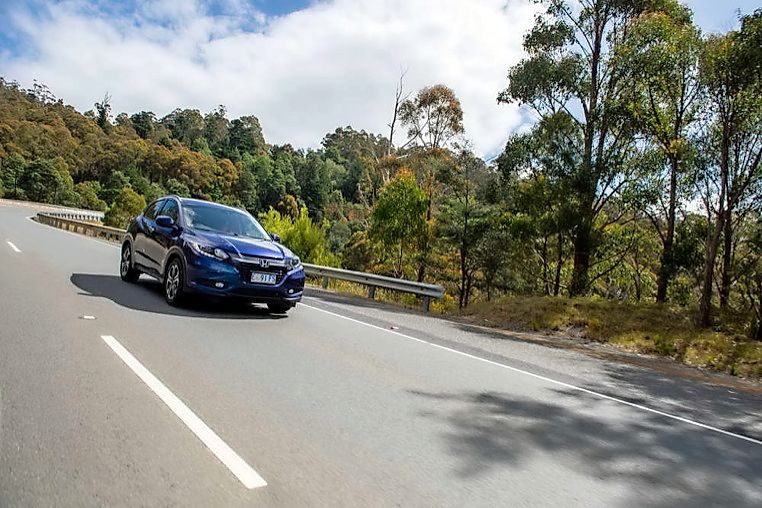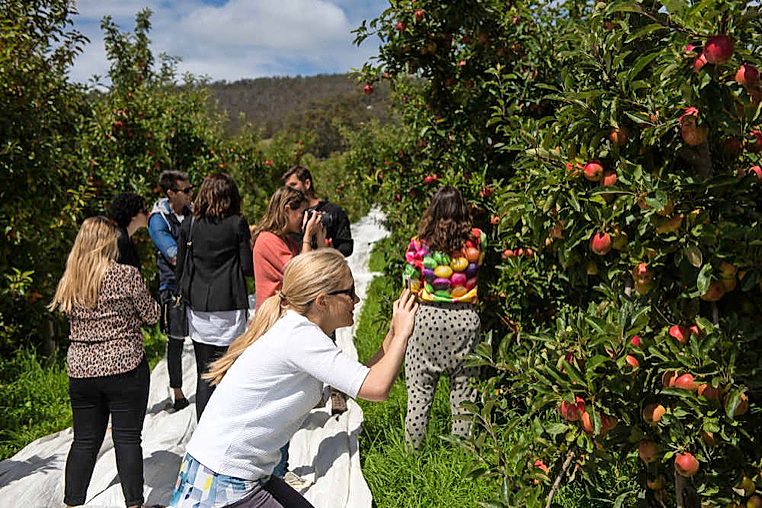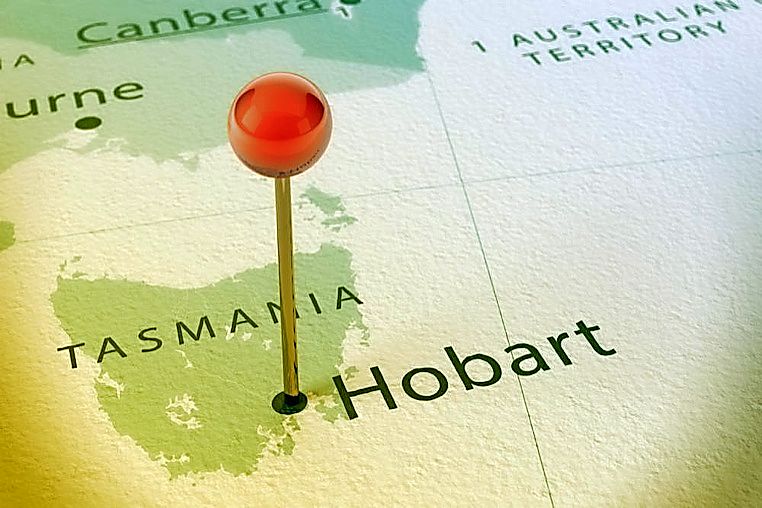Joe Davey took a Honda HRV across Bass Straight to experience the Tasmania’s newly invigorated cultural and food scenes.
“I like to think of Tasmania as the gangly weird girl in high school.”
Former MasterChef contestant turned TV chef and restaurateur Ben Milbourne is describing the evolution of his home state to a room full of visitors, and none of us are really sure where he’s going with it.
He continues: “Then you get the invite back for your 10-year reunion, and you notice this really different, beautiful girl standing at the bar. You have a chat to her and you realise she’s confident but subdued, and quirky and quiet … so you change your flights and stay a little longer to get to know her.”
It’s fitting that this analogy is being delivered in the private dining room of a cavernous art gallery widely lauded as the reason for the duckling-swan transformation of Tasmania’s tourism industry.
Home to one of the world’s most controversial art collections, MONA (Museum of Old and New Art) has lured more than a million visitors across Bass Strait since it opened at the start of 2011.
When multimillionaire David Walsh excavated a colossal chunk from the banks of the Derwent River to build the $75 million subterranean gallery, he effectively buried the stubborn ‘Slo-bart’ pejorative deep below its sandstone foundations.

WILLIAM SMITH & SONS APPLE FARM
Locals love him for it, speaking of the professional gambler-turned-art-collector in hushed, reverent tones. But while MONA-mania doesn’t seem to be losing any steam, its surroundings have also thrived.
Our plan is to eat and drink our way through one of these flourishing regions, a fertile bit of land known as the Huon Valley.
It’s about 40 kilometres south of Hobart, barely a blip on the odometer of the new Honda HR-V, our chariot for the journey. The compact SUV seems at home both in circumnavigating the city’s morning peak and in hugging the generous curves of the Huon Highway as it makes its way towards the southernmost tip of Australia.
En route we roll to a smooth stop at Nutgrove Beach, where a kitsch-looking 1950s caravan is exuding a heady fragrance. Bentwood Coffee is the brainchild of chippie Chris Spillane and his wife, barista Megan McTurk, who were, in Chris’ words, “sick of waiting in line at music festivals for crap coffee”. The couple restored the old caravan using recycled materials, stocked up on locally roasted Zimmah beans plus a selection of teas and treats, and have been parking themselves around Tasmania since 2013.
If Bentwood represents Tasmania’s new purveyors of local produce, William Smith & Sons’ apple farm is the stalwart. Established in 1888, the orchard is one of the oldest still operating in the Huon Valley. Buoyed by the area’s clear air, water and nutrient-rich soil, fourth-generation grower Andrew Smith took his great-grandfather’s farm organic in 1999, before establishing Australia’s first organic cidery in 2012.

OUR RIDE AT SALAMANCA PIER
About 50 kilometres south of Willie Smith’s, Peter and Frances Bender are also making the most of Tasmania’s natural assets. Long before Australians found their taste for fresh salmon, the former cattle farmers decided to experiment with fish farming on their 11 kilometres of ocean frontage at Hideaway Bay. Almost three decades later, Huon Aquaculture is Tasmania’s second-largest salmon farm and boasts a $200 million turnover.
Every salmon pulled out of the water is sashimi-grade, thanks to state-of-the-art pens that provide a happy, healthy environment. There’s also the small factor of some of the purest air and water in the world thanks to their isolated position. “Next stop, Antarctica,” Frances Bender says.
Our next stop is a little easier to reach. Nestled in the foothills of the Huon Valley, Home Hill Winery Restaurant has collected a swag of accolades since opening in 1993, most recently at the Royal Hobart International Wine Show 2014. “Tasmania’s Best Red Wine” – a 2012 pinot – tastes even better sitting on the terrace of the rammed-earth-and-timber restaurant, particularly when paired with its menu of produce sourced from just a few paddocks over.
No food tour of Tasmania would be complete without cheese, our final destination is the cellar door of Bruny Island Cheese Company, tucked behind the sandstone facade of Hobart’s Salamanca Arts Centre.
Cheese-maker Nick Haddow and his wife Leonie Struthers fell in love with Bruny island while visiting in 2001 and started the business soon after. If you can’t get out to the island that made the couple change their flights and “stay a little longer”, then sampling their produce will at least give you a taste of it.
It might even be enough to have you pushing out your own flights a day or two.
Jo Davy travelled to Tasmania courtesy of Honda Australia
What’s on mona Foma – January 2016
Festival of music and art, featuring the Flaming Lips, January 13-18, 2016. Line-up and tickets mofo.net.au
Getting there
Take your car to Tassy on the Spirit of Tasmania. Passenger fares start at $79 per adult for day sailings until November 21, plus $87 each way for a car . www.spiritoftasmania.com.au












